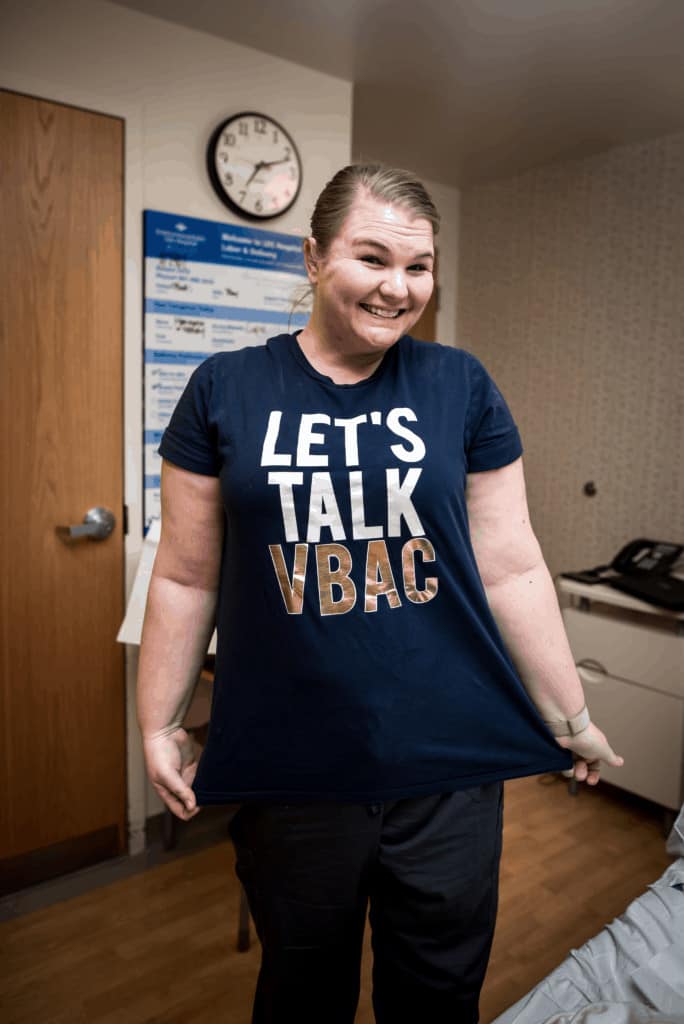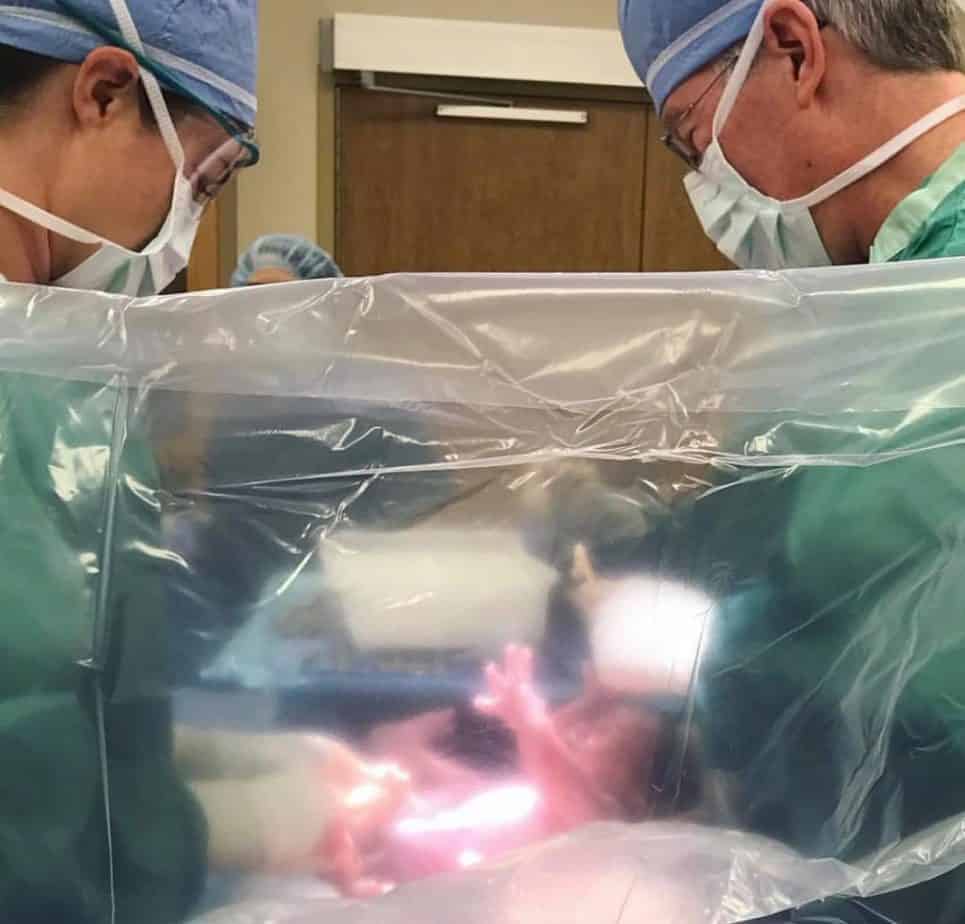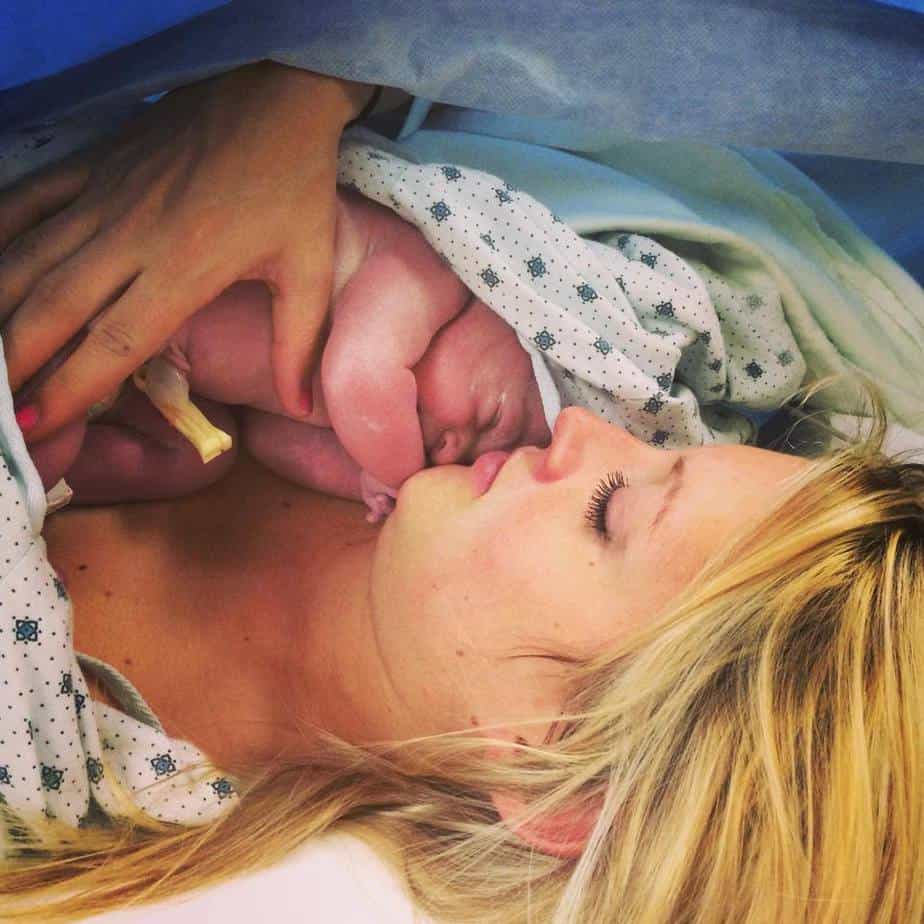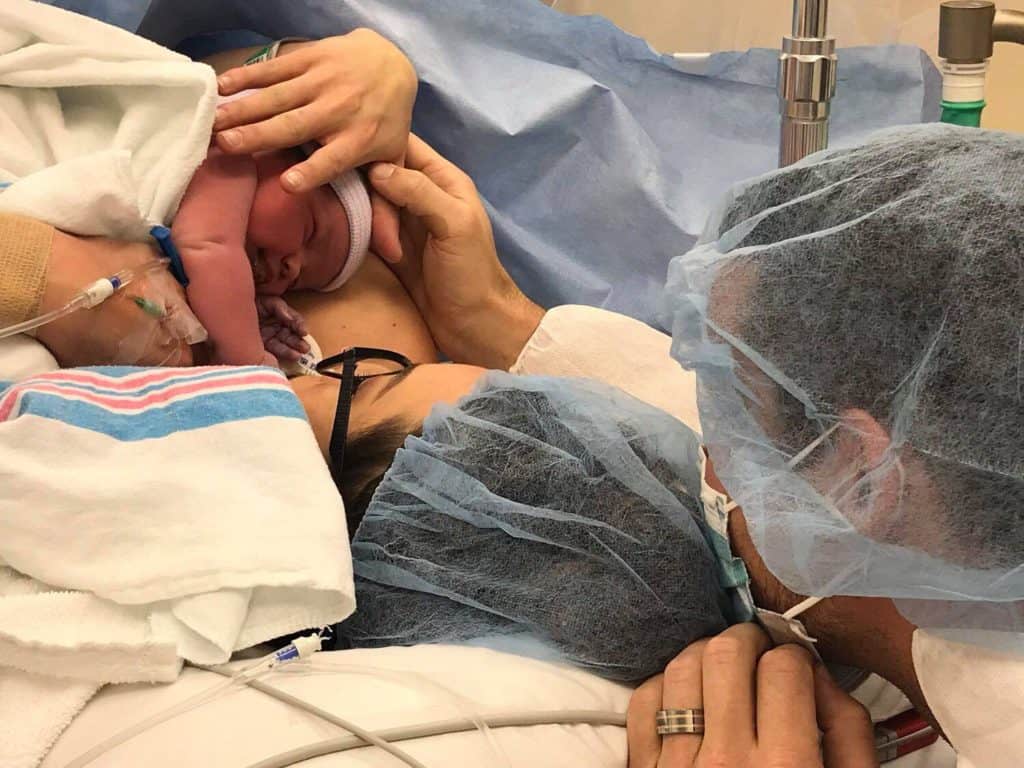National Cesarean Awareness Month
By: Meagan Heaton, Co-Owner of The VBAC Link, CD(DONA), AD(MCU)
Have you had a Cesarean section, or know someone who has? 1 in 3 babies are born by Cesarean. The nation’s Cesarean section rate is 32%. That number has substantially grown since 1916 when it was 5%. A lot has changed since 1916 and during the month of April the International Cesarean Awareness Network runs a campaign to raise awareness about Cesarean sections. Their mission is to help improve both the mother’s and child’s health by decreasing unnecessary Cesareans through education and support. Because April is National Cesarean Awareness month I wanted to talk to you a little more about Cesarean sections and what options mothers have for future births.
4 Main Reasons for Cesarean Section
Below are the four main reasons babies are delivered by Cesarean section. While these are not the only reasons, they are the most common, and generally tend to be the most preventable.
Fetal Heart Problems
At most birth locations the provider checks on the baby by listening to their heart tones. Typically for a mother who is considered low risk and does not receive interventions, such as pitocin or an epidural, the provider will listen to heart tones intermittently every 30-45 minutes. For some labors, the provider may require the mom to have consistent fetal monitoring. It is normal for a baby’s heart rate to fluctuate. If there are several heart rate drops, or if the baby is not recovering properly even after turning off interventions, moving positions, or extra oxygen, this can be a reason a provider would suggest a Cesarean section.
Malpresentation or Breech
There is more than one position that a baby can be in while in utero. It is important to try and get a baby in an optimal position before labor begins; head down and anterior, or baby’s back to mother’s belly. There are wonderful resources like Spinning Babies and Miles Circuit to learn how to get the baby in this position. During labor, if the baby is not in an optimal position, it can cause things like:
- Back labor
- Hard contractions with slow cervical progress
- Longer labor
- Pushing with little progression
Changing positions during labor can help move the baby to an optimal position. Positions like hands and knees, walking, sitting on the toilet backwards, and squatting can help open the pelvis and allow the baby to move to an optimal position and come down the birth canal faster. A doula will also have more ideas and techniques to help the baby rotate.
A baby could also be in a breech position, presenting a foot or bottom rather than their head. Vaginal breech birth is something that has almost disappeared over the years. It was once considered a variation of normal but around the year 2000 a study was performed which suggested that breech birth was not a safe option and Cesarean sections should be performed. Although the study was eventually found to be flawed, it changed a lot in the birth world and breech delivery is no longer taught in obstetrics school. In 2018 ACOG released a Committee Opinion (745) on breech presentation. They stated:
“Obstetrician–gynecologists and other obstetric care providers should offer external cephalic version as an alternative to planned cesarean for a woman who has a term singleton breech fetus, desires a planned vaginal delivery of a vertex-presenting fetus, and has no contraindications. External cephalic version should be attempted only in settings in which cesarean delivery services are readily available. Planned vaginal delivery of a term singleton breech fetus may be reasonable under hospital-specific protocol guidelines for eligibility and labor management. If a vaginal breech delivery is planned, a detailed informed consent should be documented—including risks that perinatal or neonatal mortality or short-term serious neonatal morbidity may be higher than if a cesarean delivery is planned.”
Failure to Progress
Failure to progress is diagnosed when a woman’s cervix has not made any change after a certain amount of time. Something to note is that there are many ways the cervix can change other than in dilation. The cervix moves forward, thins, and opens. Sometimes a woman will be at 3 cm for hours. This is normal. Early labor can take a lot of time, especially for a woman who has never had a baby before. According to ACOG and the SFMFM, a woman should not be considered “failure to progress” until she is 6+ cm dilated, the waters have been ruptured, and no cervical change has been made (including effacement, and cervix moving forward) for more than 6 hours. If the cervix is not progressing, it could be that the cervix needs more time, or maybe the baby’s head is not applying the right amount of pressure due to its fetal position. For the second stage of labor there is no time limit on progression. This means a woman can push for as long as she needs assuming baby and mom are okay.
CPD (Small Pelvis) or Big Baby
CPD stands for Cephalopelvic Disproportion meaning the pelvis is too small to fit a baby through it. This diagnosis is given more often than people realize. In reality it is extremely rare for a mother to have true CPD. CPD is more common in countries where women are malnourished or there has been an extreme pelvic injury or surgery. If a provider tells a mom that her pelvis is too small it may be a good idea to get another opinion. Pelvises mold and flex as do babies’ heads and even big babies come out of seemingly small pelvises. If a baby is not engaging and descending it could be due to the baby’s head not being in an optimal position and so it’s harder for them to come down. A simple change of position for mom can open her pelvis to make more room for the baby to come down.
Options for Birth After Cesarean:

If a woman has already had a Cesarean section, she has options for subsequent births. TOLAC, or Trial of Labor after Cesarean, is a reasonable option for most women. 80% of women qualify for a vaginal birth after Cesarean section but only 10% will be given the option to try.If a woman desires to have a vaginal birth after cesarean (VBAC) the best suggestion is to assemble a good birth team including finding a provider that is 100% supportive and hiring a doula. She ought to educate herself and surround herself with people who support her desire to birth vaginally. There is a great VBAC Prep course I offer for women wanting to learn more from some of our local doulas who specialize in VBAC. You can find that course at thevbaclink.com/parents.
Ways to Create a Positive Cesarean Birth
In the event a C-section is medically necessary or requested by the mom, there are ways to make it a positive and gentle experience. It is often referred to as a gentle Cesarean or Family Centered Cesarean. This means that there are a few extra steps to help incorporate a positive and more natural approach. The following are options to create a family centered or gentle Cesarean that a mom can discuss with her provider.
- Immediate skin to skin in the Operating Room (OR) and breastfeeding
- Vaginal seeding (the mom wipes the vaginal canal with a sterile gauze then wipes it on baby’s face and in their mouth after delivery.) GBS may affect this option
- An extra support person in the OR
- Images taken of the birth
- Calming music
- Arms free to move
- Using a clear drape
Overall it is important for the mother to look back at her birth and view it as a positive experience no matter what type of birth she had.
If you are expecting and would like to learn more about how to prevent a Cesarean section or if you have had a Cesarean section and would like to know more about the options you have, check out your local ICAN group and The VBAC Link.
References:
The Lancet (2000) Planned Cesarean section versus planned vaginal birth for breech presentation at term: a randomized multicenter trial. From https://www.thelancet.com/journals/lancet/article/PIIS0140673600028403/fulltext?fbclid=IwAR1s1HkXhbNlaFu6tkntY4kwD5FhQDVUS9-Ja3zDVo3RUC4BzDC2EZlPD14
ACOG, FMFM. (2014). Safe Prevention of the Primary Cesarean Delivery From https://www.acog.org/Clinical-Guidance-and-Publications/Obstetric-Care-Consensus-Series/Safe-Prevention-of-the-Primary-Cesarean-Delivery
ICAN: http://www.ican-online.org/
Spinning Babies: https://spinningbabies.com/
Miles Circuit: http://www.milescircuit.com/
The VBAC Link https://www.thevbaclink.com/
About Meagan:

Meagan is co-owner of the VBAC Link. She has supported over 100 women during their pregnancy and birth. A VBA2C mom, her drive is to help women like herself feel educated, supported, and empowered during their birthing time.



